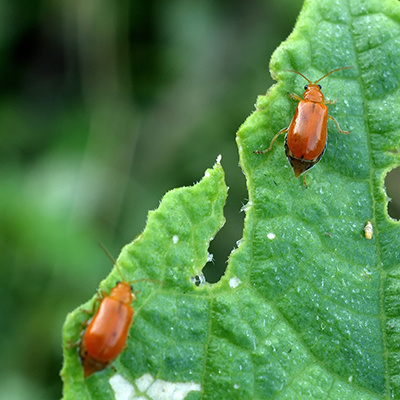How to Treat Bee Stings
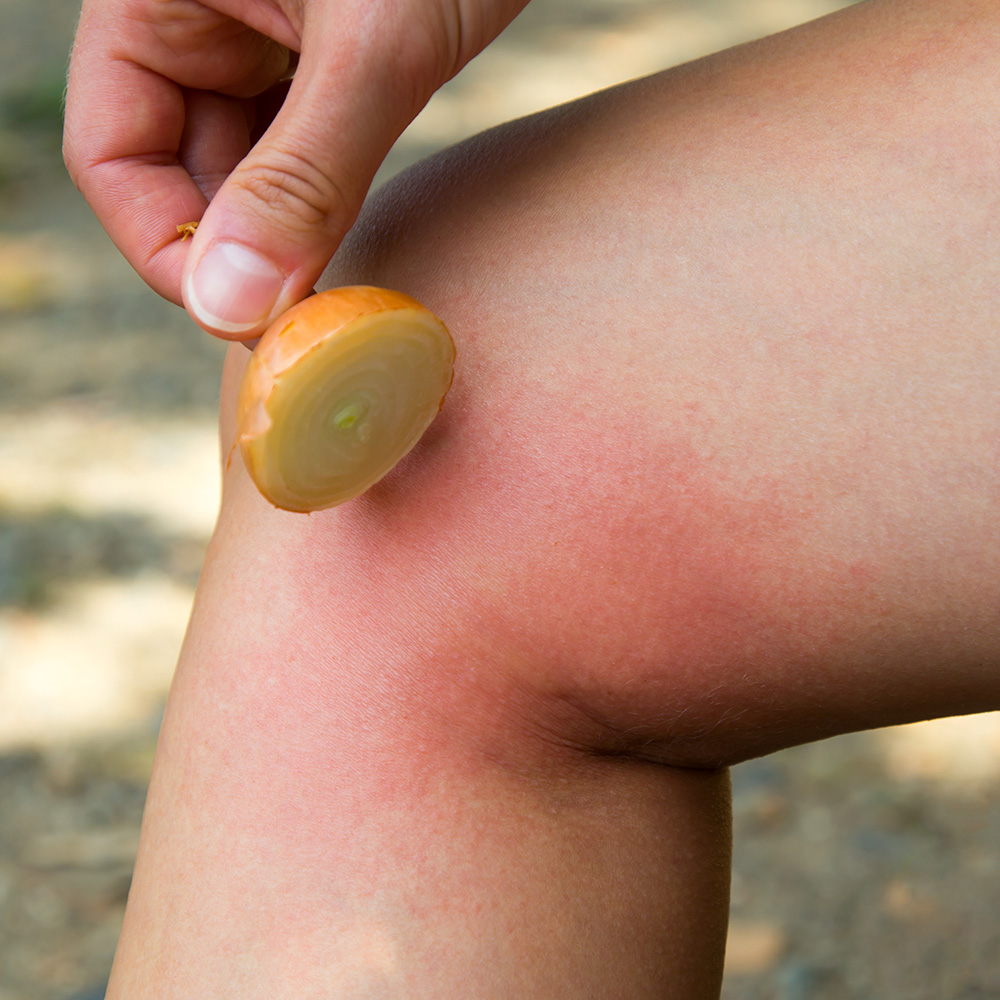
Last updated September 7, 2023
A hazard of doing yard work and outdoor chores is the occasional attack from bees, wasps or other stinging insects. Bee and wasp stings can be painful, causing short-term soreness and long-term itchiness, as well as more adverse reactions in people allergic to them. This guide reviews how to treat bee stings, symptoms of bee stings and how to avoid getting stung in the first place.
Tip: Before you take any medication, always read the directions for dosage and other factors.
Difficulty:
Beginner
Duration:
Under 2 hours
Table of Contents
How to Remove a Bee Stinger
Treating the Bee Sting Symptoms
Remedies for Bee Stings
What to Do If You Have an Allergic Reaction to a Bee Sting
How to Avoid Stinging Insects
How to Remove a Bee Stinger
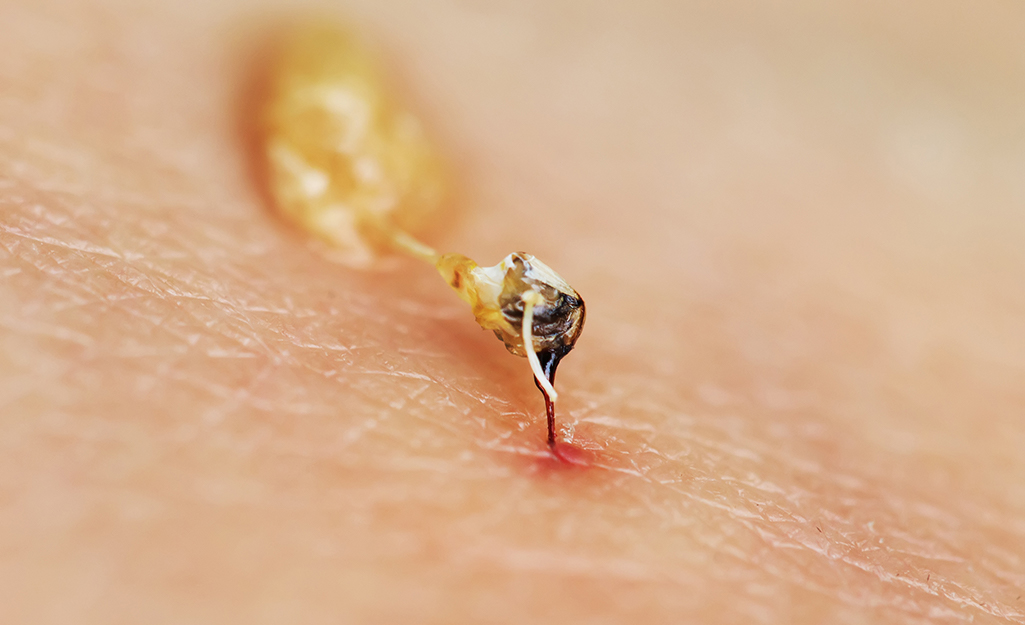
Honeybees leave a stinger in the skin. However, bumblebees and wasps, including yellow jackets, don’t leave a stinger behind.
When you get stung by a bee, take out the stinger as soon as possible. Removing a stinger quickly can minimize the amount of bee venom in your system.
- Find the stinger. It should resemble a dark splinter. The stinger will be at the center of any red welt or rash that develops after you get stung.
- Scrape the stinger loose with your fingernails or a credit card. Avoid squeezing the stinger, which can send residual bee venom into your system.
- If another person is available, ask them to help you remove the stinger, especially if the sting is on your back or otherwise out of reach.
Treating the Bee Sting Symptoms
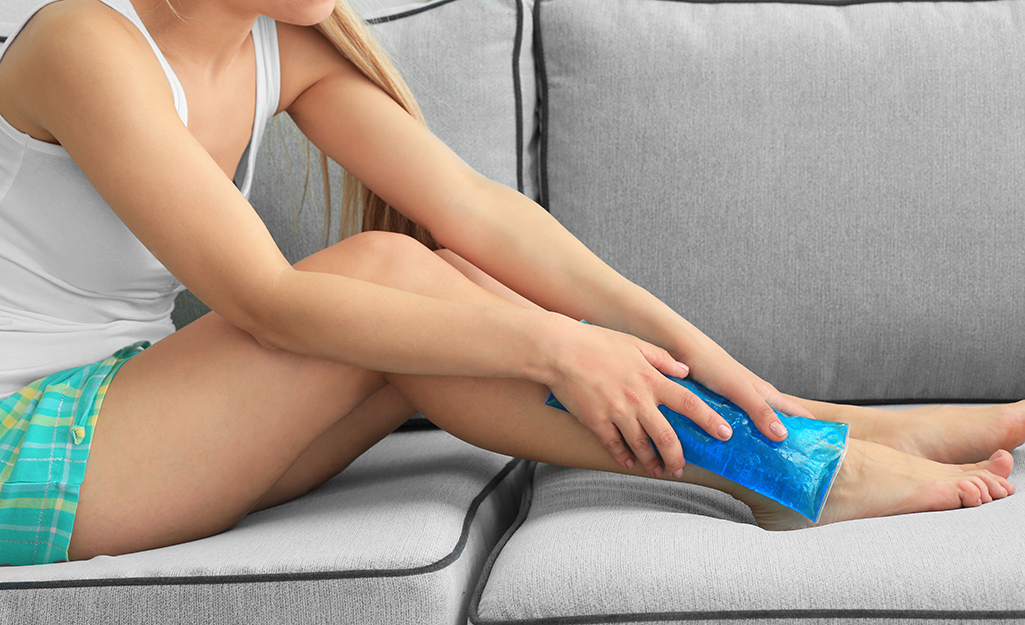
Bee sting first aid at home involves treating the pain, redness and itchiness caused by stinging insects.
- First, wash the area of the sting with soap and cold water. Washing the area can soothe the pain and remove residual venom from the skin.
- Apply a cold compress to the area. Wrap ice or a cold pack in a cloth or towel so it doesn’t directly touch the skin. Apply for 20 minutes and then as needed for pain and swelling.
- If you’ve been stung on your arm or leg, elevate it to reduce swelling and pain.
- Avoid scratching the sting area, which can make the itchiness worse.
Remedies for Bee Stings
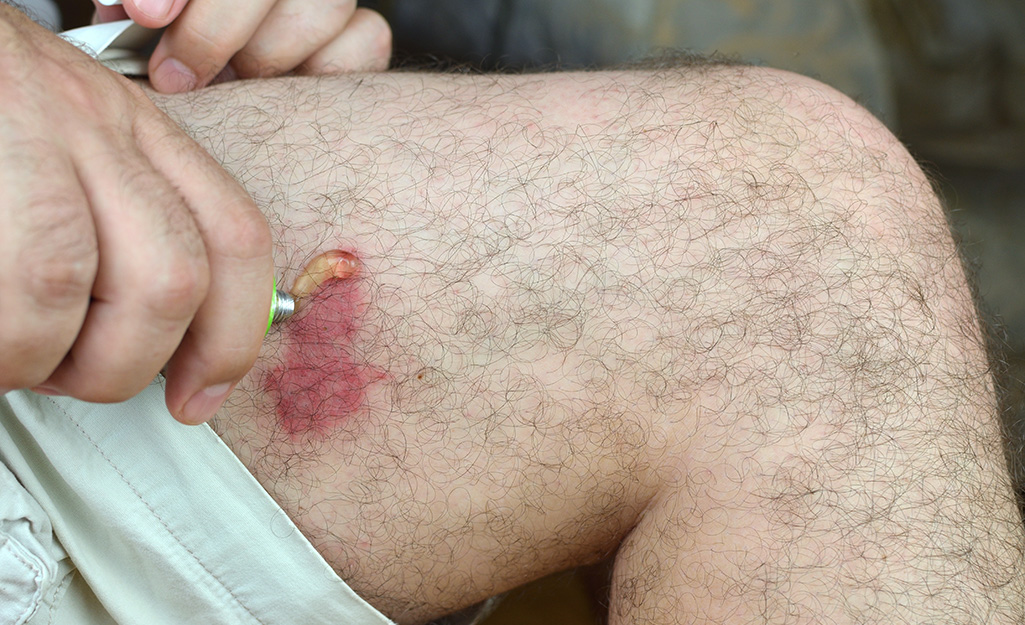
Topical remedies can alleviate the pain, itching and swelling of a bee sting, especially in the short term.
- Store bought remedies include hydrocortisone cream and calamine lotion. Apply these products as directed.
- A popular home remedy is a baking soda paste. Make it with one tablespoon of baking soda and enough water or vinegar to give it a pasty consistency. Some suggest that a dash of meat tenderizer can increase its effectiveness. Applying this to the sting quickly may draw out some of the toxins. Cover the sting with a bandage after applying the paste.
- Other home remedies for bee stings include applying small amounts of honey or toothpaste to the area. Using a fresh-cut onion is also suggested.
- When using a topical remedy, use one at a time. For instance, don’t mix a store-bought ointment with a homemade baking soda paste. Give the remedy time to work before trying something else.
- For the soreness and swelling, many doctors recommend such oral pain relievers as ibuprofen or acetaminophen.
- To reduce the itchiness from the sting, consider taking an oral antihistamine.
If your bee sting doesn’t seem to be healing after two days or you have questions about it, call a doctor.
What to Do If You Have an Allergic Reaction to a Bee Sting

Some people develop sensitivity to bee stings over time. You may be allergic to some kind of stings, but not others. If you’re stung, monitor your reaction closely. If you get multiple stings, like more than 10, at the same time, it’s best to see medical attention as soon as possible. You may also need medical help if you’re stung in your mouth or throat or in the eye.
If you have bee sting allergies, let people know, especially if you’re taking part in outdoor activities together. If you carry an EpiPen or other epinephrine auto-injector, tell your family and friends. Show them how to use it so they can help you in an emergency. Make sure they know you will still need medical attention after the EpiPen has been used.
Allergic reactions usually occur quickly and can include such signs and symptoms as:
- Rapid pulse
- Severe itching
- Swelling of tongue and throat
- Difficulty breathing or shortness of breath
- Nausea and vomiting
- Dizziness
- Loss of consciousness
If you have a severe allergic reaction to stings or know that you are allergic, call an emergency number or seek medical attention as soon as possible.
- If you know you have an allergy, follow the bee sting allergy treatment recommended by your doctor.
- If your doctor has recommended using an epinephrine injector following a bee sting, press it against your thigh and hold it for a few seconds to avoid anaphylactic shock. Have someone else do it if you’re not able.
- Wait for emergency assistance.
How to Avoid Stinging Insects
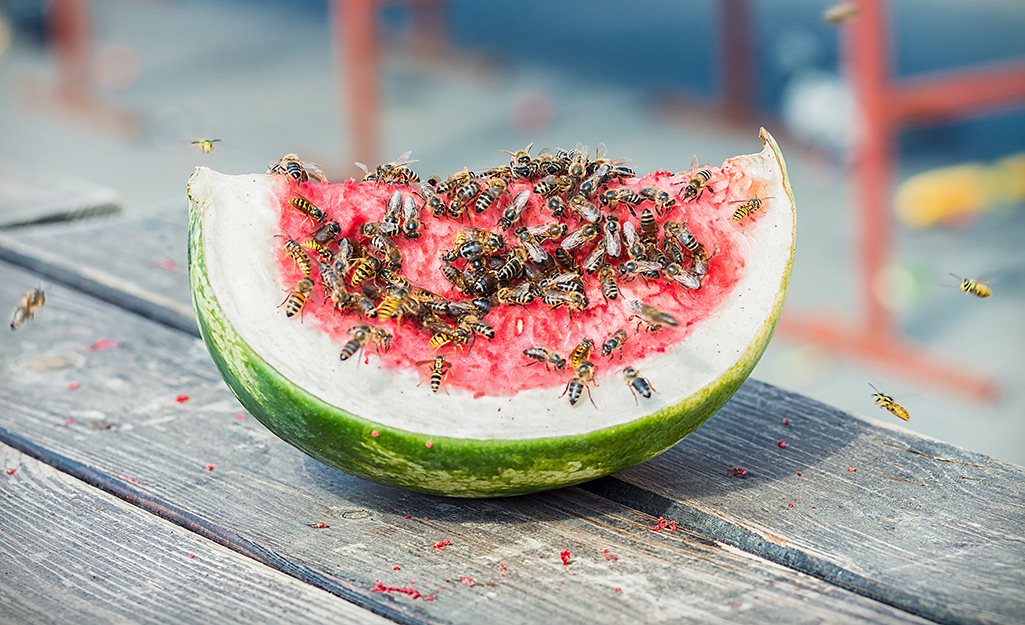
Staying away from beehives and wasp nests can help you avoid stinging insects. If you find beehives or a wasp nest in your yard, close to where people might get stung, consider calling an exterminator or even a beekeeper to get rid of it safely.
When you’re outside, you can also take these precautions:
- Be wary when walking barefoot. Bees and wasps are can be on the ground sometimes.
- Insects can be attracted by food or sugary beverages. Cover your food during picnics. Avoid drinking from open soda cans. In addition, stay away from uncovered garbage cans.
- Know that sweet-smelling hair products, perfumes and other products can attract bees.
- White, yellow and bright floral shirts are more likely to attract bees than clothing in more muted colors.
For most people, bee and wasp stings are uncomfortable, but don’t require medical attention. Learning how to treat bee stings can help relieve the pain. Keep some over-the-counter remedies on hand so you can perform bee sting first aid. Still, if you have any concerns or questions about a sting, talk to a doctor,
If you’re taking part in outdoor activities, ask your family and friends if they have allergies to bee or wasp stings. In case of a sting, you may need to help someone with their medication or by calling 9-1-1.
Need to control the bees, yellow jackets or wasps in your yard? Shop our range of pest control options online. The Home Depot delivers online orders when and where you need them.

